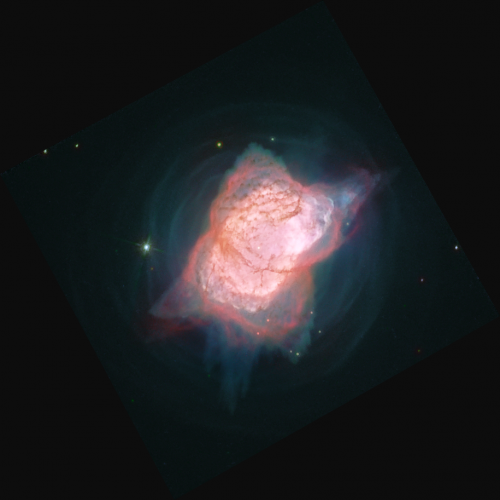Hydrogen and helium are the two most abundant and simplest elements in our universe. They are crucial for star formation and other processes like stellar nucleosynthesis—the creation of new, increasingly complex elements in stars. Through this process, hydrogen and helium are vital to the formation of virtually every other element. They are also the oldest elements in existence. How did hydrogen and helium behave in the primordial universe, before the formation of other elements? What types of molecules did they create? Recent research from a group led by Oldřich Novotný at the Max Planck Institute for Nuclear Physics in Heidelberg, Germany, may shed some light onto these questions.
The atomic palette of the early universe consisted of just a few small nuclei: hydrogen (H), deuterium (a variant of hydrogen), and helium (He). However, as the universe began to cool, these nuclei began to combine with electrons to form simple atoms. Eventually, molecules began to form out of these primordial atoms. One theory of how these molecules might have formed is through radiative association, a process where atoms collide and emit light to form a molecule. The molecules of the early universe, however, did not have a diverse pool of atoms to draw from. This is where the helium hydride ion, or HeH+, comes in.
Scientists had long theorized that this molecule was essential to the evolution of our universe. HeH+ is the universe’s first molecule. The formation of HeH+ through radiative association between helium and free protons marked the formation of the universe’s first molecular bonds and would ultimately pave the way for the formation of more hydrogen atoms. In fact, molecular ions like HeH+ are still very important to astrochemistry in our modern universe. Since its discovery in 1925, scientists hadn’t been able to find HeH+ outside of a laboratory. That is, until April 2019, when a team of researchers led by Rolf Güsten at the Max Planck Institute for Radio Astronomy in Bonn, Germany found evidence of HeH+ in a planetary nebula.
This discovery sparked Novotný’s team to begin a complementary experiment, studying HeH+ in conditions similar to those in our early universe. One feature of this early universe is the abundance of electrons, which induces reactions where these electrons destroy molecular ions. These dissociative recombination reactions spell the end of the line for many molecular ions, destroying them and limiting their abundance in the early universe.
Using a cryogenic ion storage ring (a piece of equipment that can cool ions to a few degrees above absolute zero) and a merged electron beam (a device that shoots electrons), the researchers were able to mimic early universe conditions and determine the stability of the HeH+ molecule under dissociative recombination. The researchers super-cooled the storage ring and injected HeH+ ions. Then, they shot an electron beam into the chamber, inducing dissociative recombination reactions that began to violently tear apart the ions into neutral hydrogen and helium atoms. By controlling the energy of the collisions, they were able to calculate an energy-dependent rate constant. This rate constant can help determine how stable these ions were. A higher rate constant means the ions are torn apart faster, while a lower rate constant means the ions are more resistant to being torn apart by the electrons.
The rate constants that they calculated in these low temperature reactions were lower than results from previous findings, indicating that these dissociative recombination reactions may occur at an even slower rate than previously hypothesized.
Since dissociative recombination reactions suggests the existence of more HeH+, the results suggest that HeH+ would have been even more abundant in the primordial universe than originally thought. Combining these findings with results from other experiments on early universe reactions and dynamics can help scientists gain an edge in their search for ancient galaxies and stars. Considering the imminent launch of the James Webb Space Telescope, a deep space telescope designed to succeed the Hubble Telescope in observing distant spatial phenomena, the researchers’ findings are particularly pertinent. Novotný and his team’s research have helped us gain a better understanding of the astrochemical origins of our current universe.

